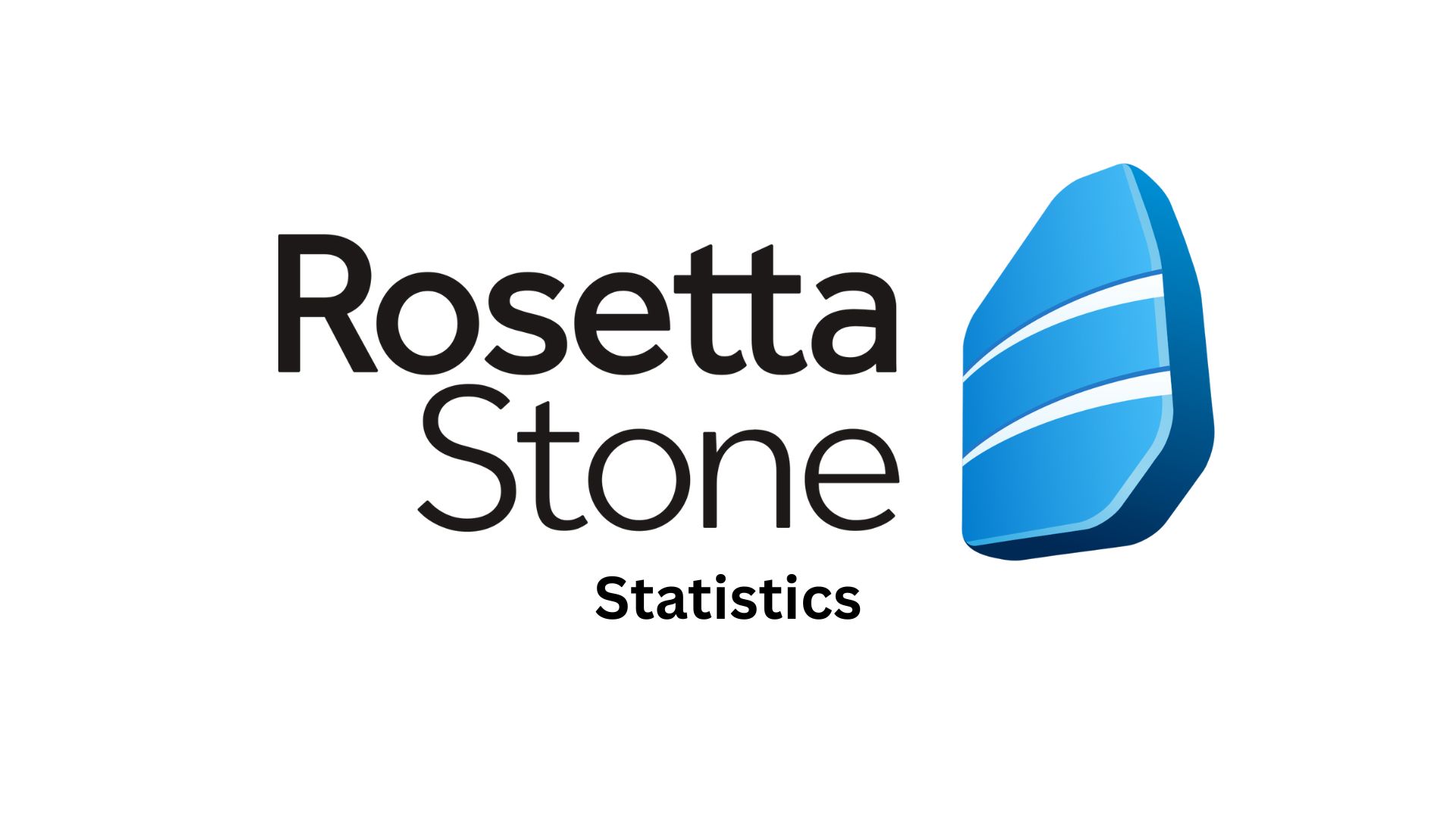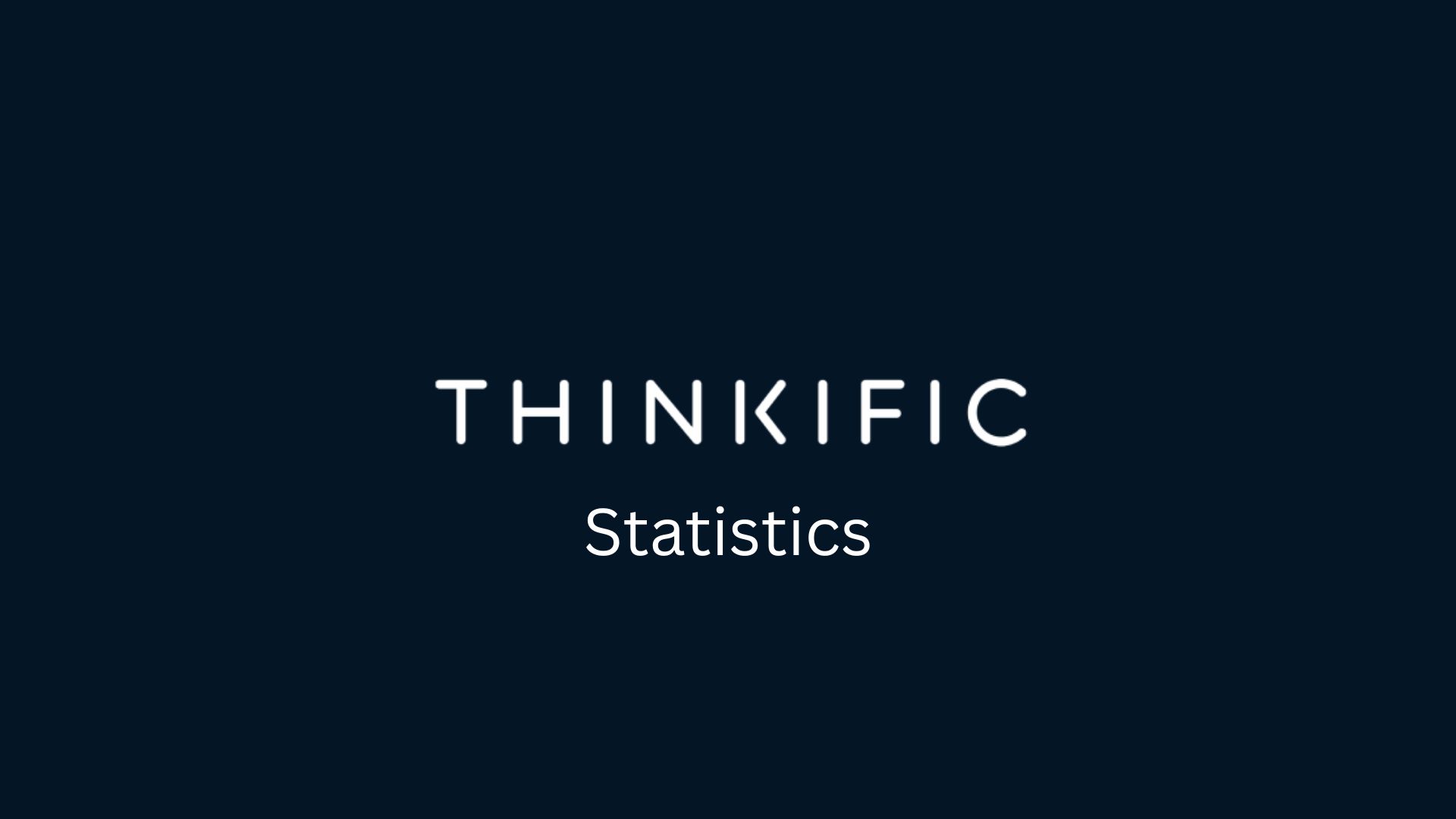Supercapacitors Statistics By Regional Market And Usage
Updated · Feb 17, 2025
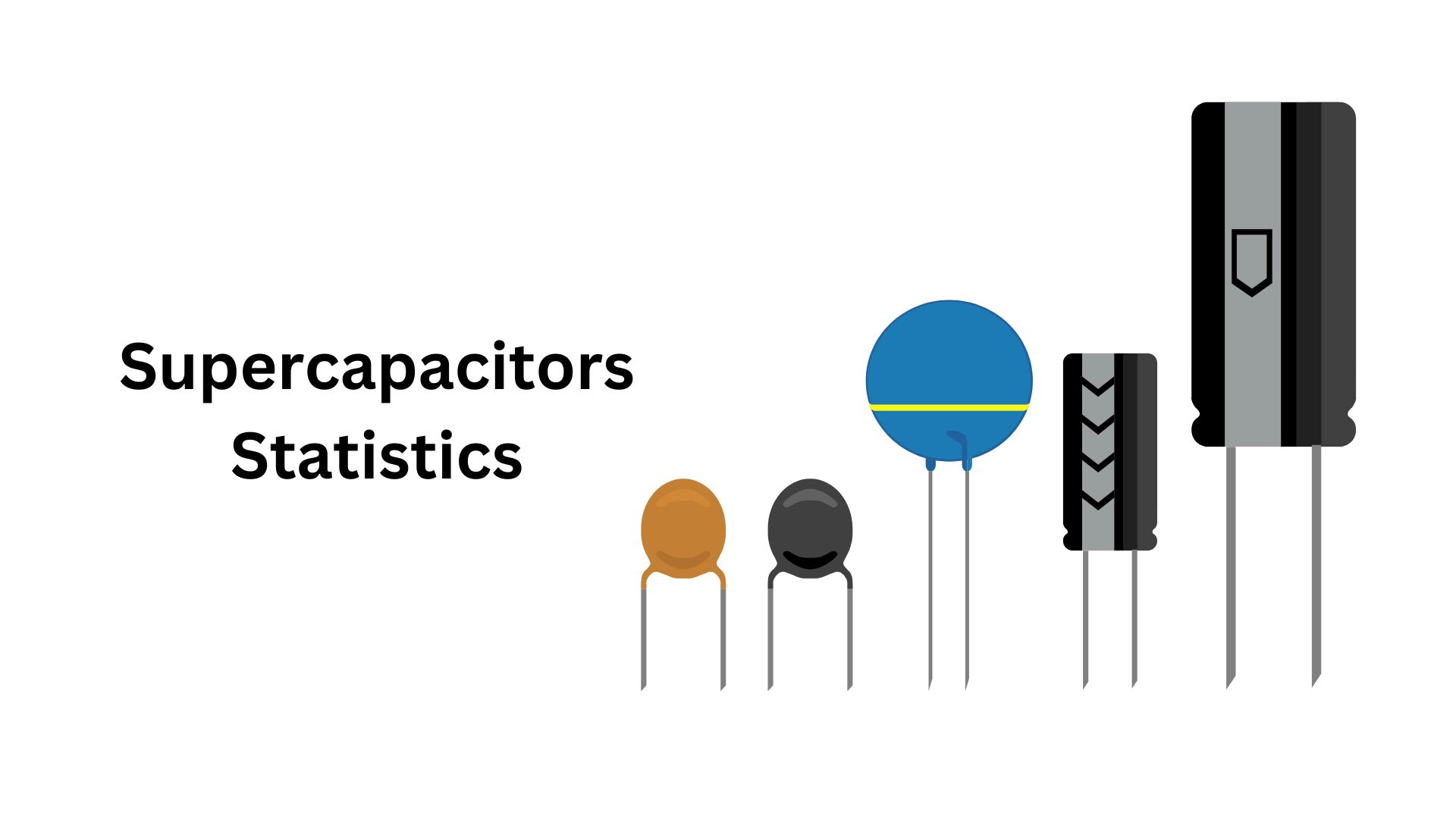
Table of Contents
- Introduction
- Editor’s Choice
- Global Automotive Supercapacitors Market
- Supercapacitors Industry Growth Drivers
- Supercapacitors Regional Market
- Supercapacitor Growth Due To EV
- Supercapacitors Usage Statistics
- Supercapacitor Market By Type
- Supercapacitor Type Of Materials
- Growing Demand For Supercapacitors Across Key Industries
- Recent Developments
- Conclusion
Introduction
Supercapacitors Statistics: Supercapacitors are ultracapacitors. They are known for their energy storage capabilities, which are close to those of a battery and more than that of a capacitor. They can charge and discharge very rapidly and at high energy density with a relatively long lifetime. The ultimate characteristics make them useful in various applications such as electric vehicles (EVs), renewable energy systems, and Electronics and appliances used by consumers.
In 2025, the supercapacitor statistics market significantly grew, reflecting its rising relevance in the energy-is-changing landscape across the globe.
Editor’s Choice
- According to supercapacitor statistics, as projected, the global automotive supercapacitor market is forecast to grow close to US$7 billion would be achieved by 2028.
- Increasing focus on energy efficiency and electrification will be the main growth drivers.
- The initiatives of the government, such as India’s US$2.35 billion PV manufacturing PLI scheme and US$2.45 billion ACC battery storage incentive, are making the market attractive.
- The country is followed in the ranking by North America and Europe with similar shares of 28%.
- Accelerate the demand for supercapacitor adoption with India’s EV adoption scheme extended to 2024 with an infusion of US$1.3 billion and PLI-ACC astoundingly battery storage schemes.
- Supercapacitor statistics state that by 2028, the kinetic energy recovery system (KERS) segment will hold around 12% of the entire market, which is worth US$7 billion in automotive supercapacitors.
- Mainly, double-layer capacitors contribute to making up the highest market share (65%) owing to their superior qualities of energy storage, rapid charge/discharge rates, and application in consumer and automotive electronics.
- Supercapacitor statistics indicate that Material distribution in supercapacitors activated carbon (40%), metal oxides (25%), conducting polymers (25%), and others (10%).
- Presently, there are over 40 million operational electric vehicles across the globe, of which over 25 million use supercapacitors for regenerative braking and energy bursts.
- In the field of renewable energy stabilization, hybrid energy storage systems, including supercapacitors, have crossed the 12-gigawatt mark in global installed capacity.
- In early 2023, Tesla acquired Maxwell Technologies for US$218 million to further develop its energy storage capabilities.
- Skeleton Technologies raised US$60 million in 2023 to boost manufacturing, while Nawa Technologies secured US$25 million in early 2024 for an expansion project.
- Graphene developments are improving energy density, charge-discharge rates, and lifetime for supercapacitors, putting them on par with batteries.
- Supercapacitor statistics reveal that The global supercapacitor market is estimated to grow at a CAGR of 20.7% between 2023 and 2028 on account of the automotive, renewable energy, and consumer electronics demand.
Global Automotive Supercapacitors Market
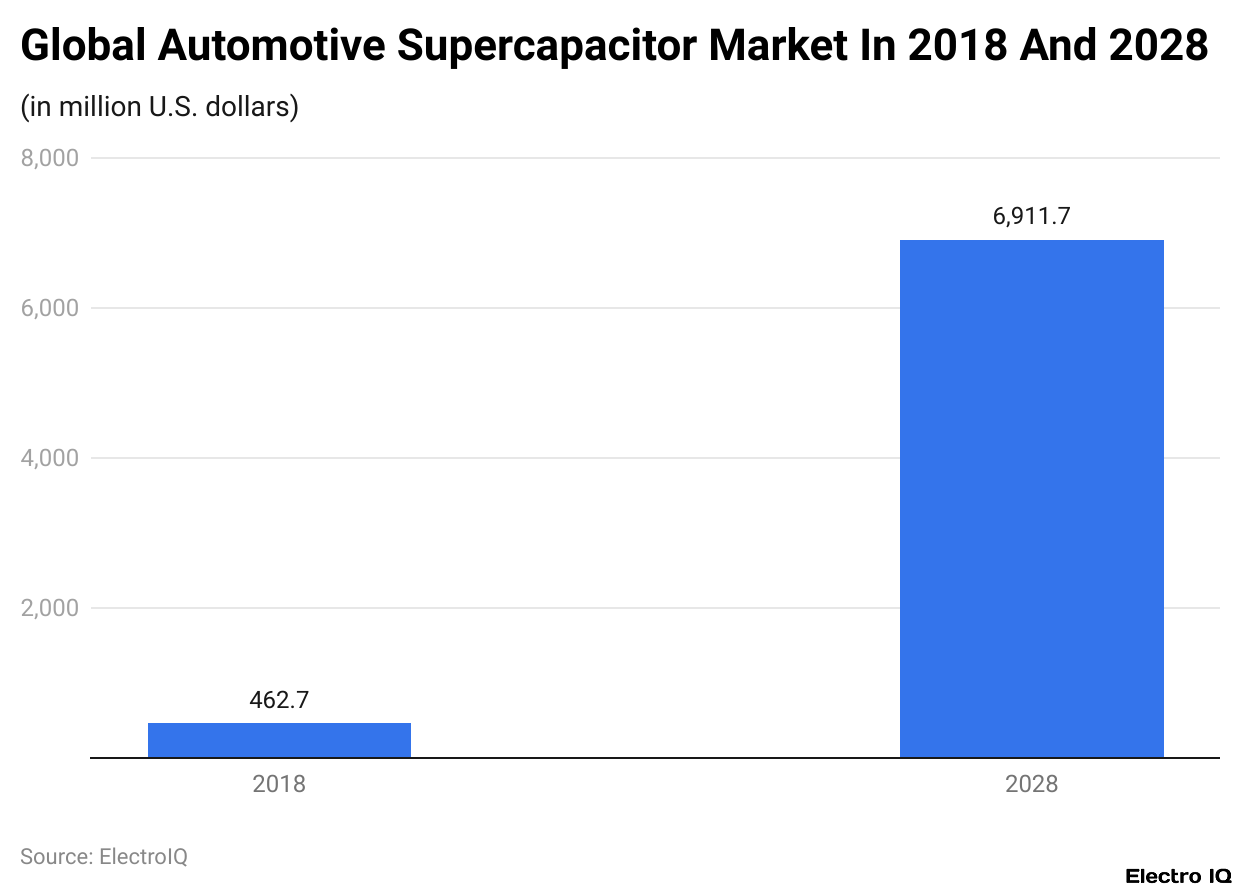
(Reference: statista.com)
- Through the years, supercapacitors in the automotive global market are said to have had major growth. The market size was much smaller in 2018 compared to an estimated value of almost US$7 billion by the year 2028.
- This implies that there is an increased demand for supercapacitors within the automotive industry.
- The reason for this demand is attributed to increased energy efficiency and the provision of regenerative braking mechanisms as well as quick bursts of power to electric and hybrid cars.
- Contrary to this, owing to electrification, the trend is one wherein auto manufacturers could well balance their supercapacitors alongside batteries to win performance across the panel and longevity of the vehicle.
Supercapacitors Industry Growth Drivers
- According to supercapacitor statistics, The electronics industry has the most profound effect on supercapacitor market growth; these energy storage devices find various applications in laptops, PDAs, portable media players, GPS, photovoltaic systems, and handheld gadgets.
- A major milestone contributing to this growth was the announcement of a massive Production Linked Incentive (PLI) scheme in 2022 for photovoltaic (PV)-related manufacturing, amounting to around US$2,357.6 million (Rs. 19,500 crores).
- Strengthening the above-mentioned trend, the appliances and consumer electronics sector is poised to undergo significant expansion, with projections suggesting a value exceeding US$21.18 billion (Rs. 1.48 lakh crore) by the year 2025, thereby more than doubling its 2021 numbers.
- In addition, the Indian government is nurturing the electronics manufacturing sector with ambitions to grow it to the size of approximately US$300 billion (Rs. 2.25 crore) by 2024-2025.
- Thus, it can be inferred that the electronics industry holds an eminent role in spurring up supercapacitor market expansion.
Supercapacitors Regional Market
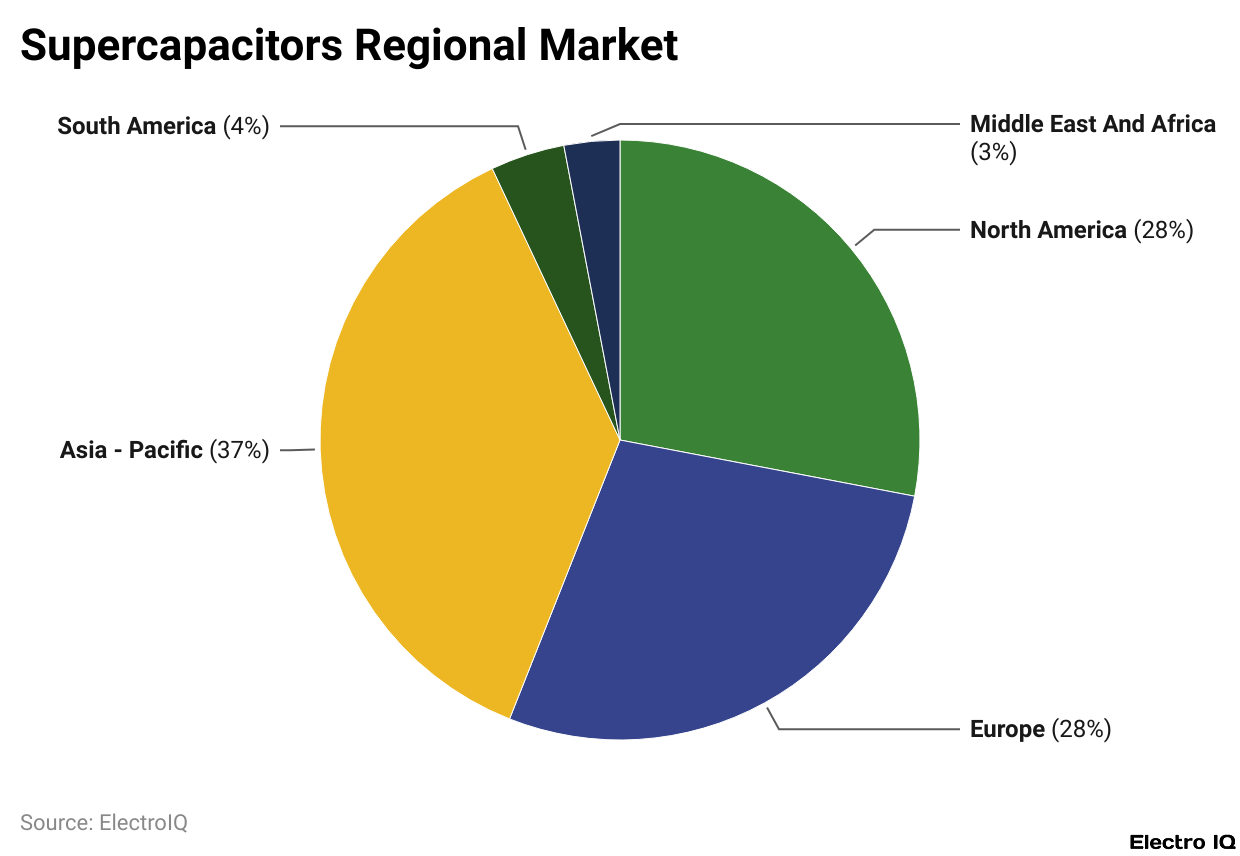
(Reference: link.springer.com)
- Supercapacitor statistics state that the global supercapacitor market is spread across regions, with Asia-Pacific leading at 37%.
- This indicates an immense demand for energy storage solutions in countries such as China, Japan, and South Korea, spurred by advancements in consumer electronics, electric vehicles, and renewable energy integration.
- North America and Europe each command 28% in market share, signifying great investments in research, development, and adoption of supercapacitor technology throughout automotive, aerospace, and industrial applications.
- The regions also enjoy the benefits of well-established infrastructure, governmental initiatives, and a growing focus on sustainable energy solutions.
- South America, at 4%, has been weighed gradually by new industrial applications and renewable energy projects.
- Meanwhile, the Middle East and Africa account for 3% of the market, where growth is decelerated but improves slowly with infrastructure development and interest in alternative energy storage technologies.
Supercapacitor Growth Due To EV
- Supercapacitor market growth is driven mainly by increasing demand for electric vehicles and higher adoption rates.
- Supercapacitor statistics state that the government in 2022-2023 in its Union Budget, extended an important scheme in the furtherance of electric vehicle adoption, which will now run until 2024.
- Nearly US$1.3 billion (Rs. 10,000 crores) will push the adoption of over 1 million electric two-wheelers, three-wheelers, passenger vehicles, and buses.
- Further, in 2021, the government announced the Production Linked Incentive for Advanced Chemistry Cell Battery Storage (PLI-ACC) scheme with a huge budget of US$2.45 billion (Rs. 18,100 crores) for battery infrastructure development.
- These schemes will further boost the EV sector and, hence, supercapacitor demand.
- The supercapacitor market varies in market size among different categories of respondents.
- Managers hold the highest share of 35.00%, followed by Directors and Vice Presidents (VPs) at 15.00%. C-level executives account for 12.00%, and the rest 38.00% is accounted for under the others.
- These figures denote the level of market participation across different roles in India’s supercapacitor industry.
Supercapacitors Usage Statistics
- Supercapacitor statistics indicate that Supercapacitor gave a division on the international supercapacitor for automotive by 2018 and is to be further projected by 2028.
- The kinetic energy recovery system (KERS) segment will account for approximately 12% of the total market in 2028, which is worth as much as US$7 billion at that time.
- Japan was the territory addressed, as the revenue of the industry “Resistors, capacitors, transformers and composite parts” from 2012 to 2018 is herein discussed, and the forecast extends to 2024 when it is estimated at around US$17.0 billion.
- The supercapacitors market in the United States was valued at approximately US$3.3 billion by 2015. Global electric car markets are booming at an annual rate of 18.2% and are expected to be around US$0.8 billion at that time.
- The total worldwide electric car market will be expected to comprise 10 million vehicles on roads worldwide during 2022.
- That increase in the supercapacitor market is propelled by the overall increase of 43% in electric vehicle sales in 2022, which reveals how the emerging demand for electric vehicles has increased and, in turn, how it has surged the supercapacitor market.
Supercapacitor Market By Type
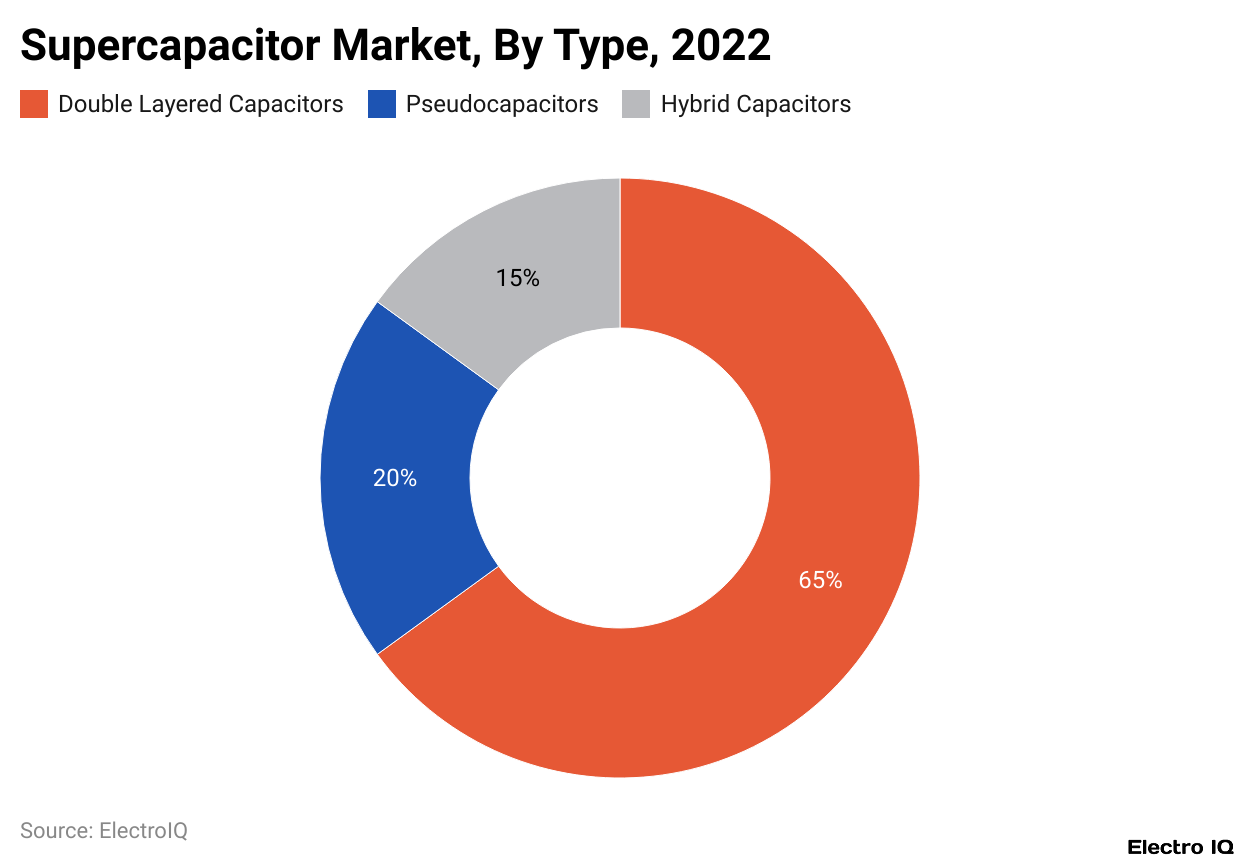
- Depending on the type, it is classified into double-layer capacitors, pseudo-capacitors, and hybrid capacitors.
- By material, the division is between activated carbon, conducting polymers, metal oxides, and others. In terms of applications, the sector is extremely diverse and could include automotive, energy, consumer electronics, industry, space, and medicine.
- Supercapacitor statistics reveal that Double-layer capacitors dominate the global supercapacitor market, holding 65% of the overall market share.
- Its dominance could be attributed to the principle of electrostatic double-layer capacitance, which takes place at the interface of the electrode and electrolyte.
- They are recognized for high-energy storage capacity, long cycle life, and fast charge/discharge features, making them widely used in consumer electronics, automotive electronics, and energy production systems that demand very high power density and quick energy bursts.
- The growing adoption of double-layer supercapacitors across various industries, including electronics and automotive, is likely to continue to spur demand for these energy storage devices.
Supercapacitor Type Of Materials
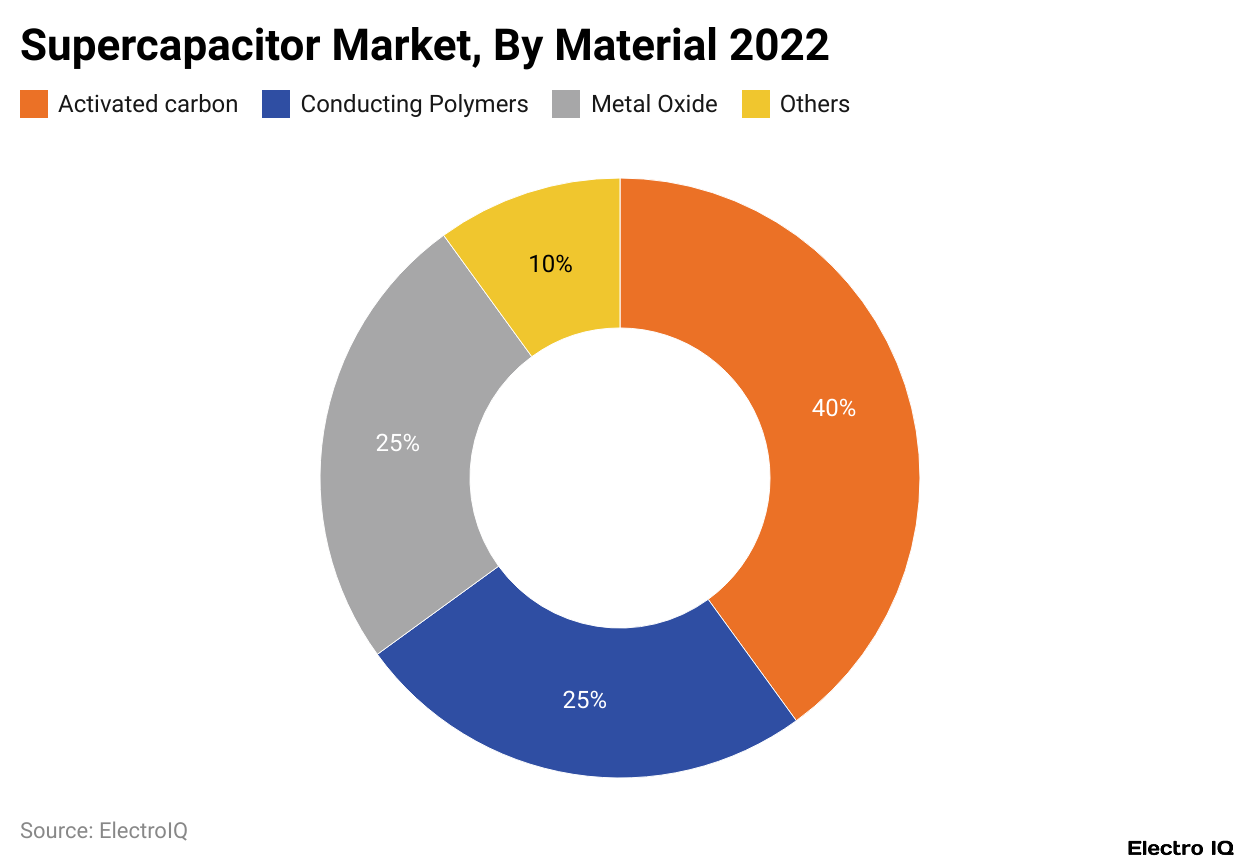
(Reference: exactitudeconsultancy.com)
- Supercapacitor statistics show that the global supercapacitor market is spread across regions, with Asia-Pacific leading at 37%. This indicates an immense demand for energy storage solutions in countries such as China, Japan, and South Korea, spurred by advancements in consumer electronics, electric vehicles, and renewable energy integration.
- North America and Europe each command 28% in market share, signifying great investments in research, development, and adoption of supercapacitor technology throughout automotive, aerospace, and industrial applications.
- The regions also enjoy the benefits of well-established infrastructure, governmental initiatives, and a growing focus on sustainable energy solutions.
- South America, at 4%, has been weighed gradually by new industrial applications and renewable energy projects.
- Meanwhile, the Middle East and Africa account for 3% of the market, where growth is decelerated but improves slowly with infrastructure development and interest in alternative energy storage technologies.
Growing Demand For Supercapacitors Across Key Industries
- Electric vehicles (EVs) are becoming more and more popular, hence accounting for the increasing market demand for supercapacitors.
- Supercapacitor statistics keep showing very good results: worldwide, there are more than 40 million EVs, of which supercapacitor-enhanced systems number over 25 million.
- These devices feature prominently in regenerative braking and perform the task of giving faster energy bursts to benefit vehicle efficiency and performance.
- Supercapacitors still play a critical role in stabilizing power output in renewable energies like solar and wind.
- Global installed capacity in hybrid energy storage systems, including many with supercapacitors, has now exceeded 12 gigawatts; those powered would start showing the importance of today’s energy grid concerning stability and efficiency.
- The ever-increasing demand from consumer electronics has also been a market driver for the supercapacitor. This demand will not wane soon, consuming rapidly charging, high-efficiency energy-storage devices.
- For instance, supercapacitors are ideal because they discharge energy quickly and are thus used very widely in applications associated with smartphones, laptops, and wearables.
Recent Developments
- Supercapacitor statistics state that Tesla acquired Maxwell Technologies in early 2023 for US$218 million to strengthen its energy storage capabilities while improving electric vehicle performance via advanced supercapacitor technology.
- Something similar occurred in mid-2023 for Skeleton Technologies, a world leader in graphene-based supercapacitors, which merged with SHAPE Group in a move that effectively combines their resources and expertise to fortify their market position.
- In late 2023, Maxwell Technologies introduced a new ultracapacitor cell designed specifically for automotive applications, providing greater energy density and improved temperature stability to enhance efficiency and reliability in electric vehicles.
- In early 2024, Panasonic launched a state-of-the-art supercapacitor module featuring new materials and design innovations, promising increased power output and longer lifespan for industrial and renewable energy applications.
- According to supercapacitor statistics, Skeleton Technologies 2023 raised US$60 million to be spent on expanding production capacity and speeding development for its next-generation graphene-based supercapacitors; similarly, in early 2024, Nawa Technologies raised US$25 million to upgrade manufacturing capacity and roll out new supercapacitor products.
- Advancements in graphene technology are enabling supercapacitors with better energy densities, faster charge and discharge times, and longer life spans, rendering them increasingly relevant in any market where traditional battery companies are strong.
- Research is also focused on hybrid supercapacitors-a combination of battery and capacitor technology that offers high energy and power density for applications.
- The global supercapacitors market is expected to grow at 20.7% CAGR during the period 2023-2028 due to the rising demand for supercapacitors in the automotive, renewable energy, and consumer electronics industries.
- The applications of supercapacitors in renewable energy systems are, therefore, on the rise, including grid stabilization, energy harvesting, and storage, which are fuelling market growth.
- The European Union Green Deal initiative that came into effect in early 2024 has thrown considerable emphasis on energy storage technologies, including supercapacitors, for the integration of renewable energy and concomitant carbon emission reductions.
- In 2023, the US Department of Energy initiated the Energy Storage Grand Challenge, intending to fast-track the development and deployment of energy storage solutions, supercapacitors included, that would help bolster grid resilience and enable electric vehicles.
- R&D is concentrating on the enhancement of supercapacitor performance and durability with advanced materials such as carbon nanotubes, metal oxides, and conductive polymers.
- Other efforts are in the area of flexible and wearable supercapacitors that would apply in portable electronics medical devices, and smart textiles, which will provide efficient energy storage in compact and flexible designs.
Conclusion
Supercapacitor statistics are highly spurred due to the rising demand for electric vehicles, renewables, and consumer electronics. Advancement in technology, like graphene-related innovations and hybrid energy storage, plays a key role in increasing energy density, efficiency, and lifespan. Government incentives and private investments hasten the pace of market penetration, and projections are grossing an estimated US$7 billion by the year 2028. Dominance by double-layer capacitors with a huge contribution from activated carbon manifests the material trends defining the sector.
Supercapacitors will be most important in the future for sustainability, electrification, and efficient power management in multiple sectors as energy storage needs change.
FAQ.
The supercapacitor market is growing because of the enormous demand for EVs, renewable energy systems, and consumer electronics. Other factors contributing to market growth include government initiatives, breakthroughs in graphene technology, and investments from big corporations like Tesla and Skeleton Technologies.
The Asia-Pacific region is the highest in supercapacitor market shares at 37.80%, followed by North America at 30.60% and Europe at 18.40%. Contributions from Latin America, the Subcontinent and Africa are 6.90% and 6.30%, respectively.
The primary materials employed in supercapacitors are activated carbon (40%), metal oxide (25%), and conductive polymers (25%), with the rest of the 10% used for developing materials. Activated carbon is selected for supercapacitors due to its low cost and high surface area, while metal oxides and polymers are used for improving efficiency and conductivity.
Supercapacitors support regenerative braking in EV-realizing energy savings, provide power bursts within seconds, and ultimately gain improvement in energy efficiency. Over 25 million EVs operate using supercapacitor-based systems, expected to reach a market of US$7 billion by 2028.
Some of the recent developments include the acquisition of Maxwell Technologies by Tesla for US$218 million, Skeleton Technologies raised US$60 million for supercapacitors based on graphene, and Panasonic has released its advanced supercapacitor module. Other ongoing research is mostly concentrated on hybrid supercapacitors and new materials like carbon nanotubes and conductive polymers.

Barry Elad is a tech enthusiast who loves diving deep into various technology topics. He gathers important statistics and facts to help others understand the tech world better. With a keen interest in software, Barry writes about its benefits and how it can improve our daily lives. In his spare time, he enjoys experimenting with healthy recipes, practicing yoga, meditating, or taking nature walks with his child. Barry’s goal is to make complex tech information easy and accessible for everyone.




